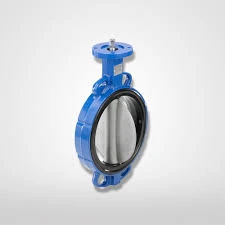Dec . 31, 2024 06:30 Back to list
Exploring the Functionality and Applications of Gate Valves in Modern Engineering
Understanding Gate Valves Function, Design, and Applications
Gate valves are a crucial component in various piping systems, widely used in industries ranging from water treatment to oil and gas production. Known for their ability to completely stop or allow the flow of fluid, gate valves serve as reliable devices to control the flow of liquids and gases. This article delves into the design, functionality, and applications of gate valves, highlighting their significance in modern engineering.
Design and Mechanism
Gate valves operate by raising or lowering a gate within the valve body, which is responsible for blocking or allowing the passage of fluid. The key components of a gate valve include the body, gate, seat, and disc. The body is typically made of materials such as stainless steel, cast iron, or bronze, ensuring durability and resistance to corrosion.
The gate is usually a flat piece that fits neatly into the valve's seat when closed, preventing any fluid from passing through. When the valve is opened, the gate is raised by a handwheel or actuator, allowing unrestricted flow. This mechanism makes gate valves an excellent choice for applications requiring a full flow with minimal pressure drop.
Types of Gate Valves
Gate valves can be categorized into two main types based on their design rising stem and non-rising stem.
1. Rising Stem Gate Valves In this design, the stem rises along with the gate as the valve opens. This feature provides visual confirmation of the valve’s position, making it easier to determine whether it is open or closed.
2. Non-Rising Stem Gate Valves Here, the stem remains stationary while the gate moves up and down. This design is beneficial in situations where space is limited, as it requires less vertical clearance.
Operating Principles
Gate valves are primarily operated through a screw mechanism, allowing gradual opening and closure. The slow operation minimizes water hammer effects and prevents damage to the pipeline. Additionally, they are designed for full-flow service, which means that, when fully open, there is a negligible resistance to flow. As such, they are preferred over other valve types, such as globe valves, in applications where pressure drop needs to be minimized.
gate valve

Applications
Gate valves are ubiquitous in various sectors.
1. Water Supply and Distribution In municipal water systems, gate valves are essential for controlling the flow of water. They can isolate sections of the system for maintenance and repair, ensuring seamless operation of citywide water supply networks.
2. Oil and Gas Industry In the petroleum sector, gate valves are employed to manage the flow of crude oil and natural gas through pipelines. Their ability to create a tight seal is particularly important in preventing leaks and ensuring safety in hazardous environments.
3. Chemical Processing Many chemical plants utilize gate valves to regulate the flow of corrosive substances. The choice of materials ensures that the valves withstand harsh conditions while maintaining operational safety.
4. Power Generation In power plants, especially those using steam and water systems, gate valves control the flow of water and steam, playing a pivotal role in thermal regulation.
Advantages and Disadvantages
The primary advantage of gate valves is their ability to provide minimal flow resistance, making them ideal for high-flow applications. They also create a tight seal when closed, which is vital for preventing leaks. However, they have some disadvantages. For instance, gate valves are not suitable for throttling purposes, as partially opened valves can cause cavitation and damage. Additionally, the operating mechanism can be slower than other valve types, which may not be suitable for emergency situations.
Conclusion
In conclusion, gate valves play a pivotal role in various industries by offering efficient flow control and reliability. Understanding their design and applications is crucial for engineers and operators to make informed choices when selecting valves for specific projects. As industries continue to evolve, innovations in gate valve technology will undoubtedly emerge, providing even more efficient solutions for fluid control.
Share
-
Reliable Wafer Type Butterfly Valves for Every IndustryNewsJul.25,2025
-
Reliable Flow Control Begins with the Right Ball Check ValveNewsJul.25,2025
-
Precision Flow Control Starts with Quality ValvesNewsJul.25,2025
-
Industrial Flow Control ReliabilityNewsJul.25,2025
-
Engineered for Efficiency Gate Valves That Power Industrial PerformanceNewsJul.25,2025
-
Empowering Infrastructure Through Quality ManufacturingNewsJul.25,2025